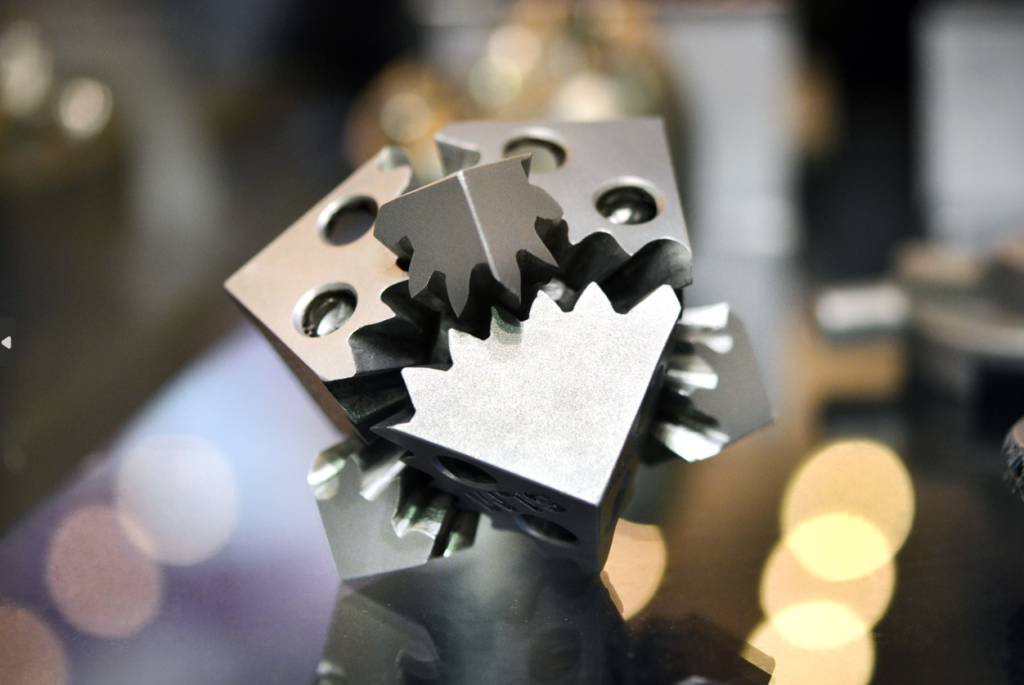The independent energy expert and assurance provider DNV has published a new edition of DNV-ST-B203 Additive manufacturing of metallic parts.
The standard, the result of a collaborative industry project, now contains baseline prerequisites for the most established Additive Manufacturing (AM) technologies for metal parts and welcomes new quality assurance concepts for the coming era of data-driven manufacturing, says DNV. In addition to the two technologies covered in the first edition, the new edition of DNV-ST-B203 involves qualification and production requirements for three new AM technologies.
“Additive Manufacturing offers a way of reducing waste of materials from excessive machining operations. The digital nature of additive manufacturing also enables new ways of ensuring quality control, by monitoring through sensors and logging production trends – which in turn may lead to increased confidence in a part’s quality. One of the basic assumptions for achieving these objectives is standardized levels of quality,” said Lucy Craig, Director, Growth, Innovation & Digitalization, Energy Systems at DNV.

What provisions does the new edition provide to most established metal AM technologies?
The new edition includes direct energy deposition using an electric arc and a laser beam (DED-arc and DED-LB). Powder bed fusion with a laser beam and an electron beam (PBF-LB and PBF-EB) is also covered, as is Binder Jetting (BJT). Furthermore, the standard now contains qualification requirements for combined manufacturing methods, such as AM features on substrate shapes. Non-Destructive Testing (NDT) acceptance criteria are provided. This standard also includes guidelines for defining part families, which may broaden the authenticity of qualifications.
Guidance on selecting criticality classes (AMC), which may assist end-users in selecting the appropriate degree of quality assurance for the given application, is also provided. Guidance on unconventional inspection techniques and in-process monitoring is also provided, which may assist manufacturers in improving efficiency and quality while unlocking the design freedom of additive manufacturing.
Furthermore, the standard was the first internationally recognized framework for the production and use of high-quality additively manufactured metal parts for the oil and gas, maritime, and energy industries. It introduced methods for managing the quality of additively manufactured metal parts, each tailored to the importance of a part’s function.
The new edition was created as part of a joint industry project (JIP) coordinated by DNV’s Technology Centre Oslo. The JIP, known as ProGRAM JIP phase 2, was created by running practical case studies concurrently with the advancement of the standard. ProGRAM JIP phase 2 participants included end-users, contractors and equipment manufacturers, part manufacturers, AM machine providers, and material feedstock suppliers.
“The learnings from the case studies helped the project to identify important activities in the qualification and production setting. In addition to assisting the work on the development of the standard, the project was able to create parts that can be put into service. And by comparing the resource consumption from part repair with that of conventional part replacement, the project showed that there could be a significant environmental benefit from enabling the repair of worn parts with additive manufacturing. The work also continues in ProGRAM JIP phase 3, which started in June 2022 and will run into 2024,” added Stian Gurrik, Project Manager ProGRAM JIP phase 3, Technology Centre Oslo, Energy Systems at DNV.

Metal additive manufacturing advancements
Previously, the Ecole de Technologie Superieure in Montreal, Canada, and a separate industrial cluster conducted research that presented a novel Additive Manufacturing Suitability (AMS) factor which can rank the printability of metal powders for laser powder bed fusion (LPBF) processes. Both studies used the Freeman Technology FT4 Powder Rheometer to assess the dynamic, shear, and bulk properties of powders and merge them into a single metric. The researchers claimed this metric, the AMS factor, can then differentiate printability in a way that conventional powder testers cannot.
Furthermore, Domin, a UK-based fluid power systems manufacturer, utilized metal 3D printing technology from global engineering firm Renishaw to develop a line of high-performance servo valves which could help reduce CO2 emissions from the fluid power industry. A servo valve is an electrically operated valve that controls hydraulic fluid by converting signals into pressure. It is commonly used to control powerful hydraulic cylinders. Domin’s 3D printed servo valves, produced using Renishaw’s RenAM 500Q additive manufacturing system, can save up to one tonne of CO2 when compared to traditionally manufactured counterparts.
To stay up to date with the latest 3D printing news, don’t forget to subscribe to the 3D Printing Industry newsletter or follow us on Twitter, or like our page on Facebook.
While you’re here, why not subscribe to our Youtube channel? Featuring discussion, debriefs, video shorts, and webinar replays.
Are you looking for a job in the additive manufacturing industry? Visit 3D Printing Jobs for a selection of roles in the industry.
Feature image shows Lucy Craig, Executive Vice President of Growth, Innovation, and Digitalization, Energy Systems at DNV. Image via DNV.


